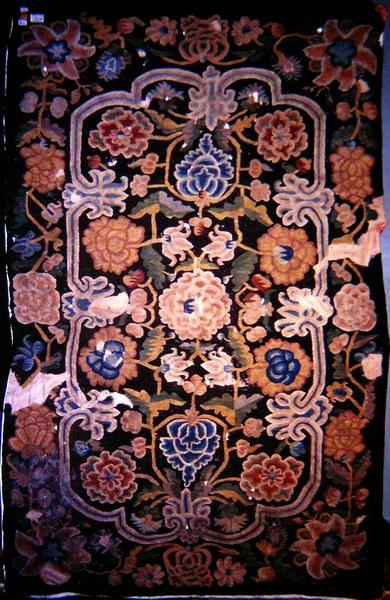In the eighteenth century Hetmanate, a semi-autonomous Cossack state within the Russian empire, Oriental-style carpets became an object of the local elite’s aesthetic desire. The Cossack elite assembled these luxury items in lavish private collections, ordered to depict them in their portraits, and even organized their production in local workshops. Since the producers of those carpets were presumably local peasants, scholars considered them to be a manifestation of Ukrainian “people’s talent,” or “national soul”. The fabrication of folk image of the Oriental-style Hetmanate carpets also aligned with the construction of Ukrainian tradition of folk art and resulted in ignoring the carpets foreign origins to bring the “national” folk features to the fore. This led to the complete disassociation of the carpets with the social class of the Cossack elite that owned them, triggered their production, and whose taste the carpets revealed. Drawing on Pierre Bourdieu’s definition of taste as a cultural capital that serves class interests, I explore the social significance of the Orient-style Hetmanate carpets in relation to their consumers as a social class (the Cossack elite). In this lecture, I argue that the Oriental-style carpets did not just simply decorate the Hetmanate elite’s estates making them more comfortable places for living and did not just provide the elite’s social rituals with relevant scenery, but also served the Cossack elite’s aspirations for the social recognition and privileges with Russian Imperial nobility, as well as for the social distancing this elite from the subordinated classes of town people and peasants. This lecture will help to better understand the complex overlap between art, the elite’s self-image, and social inequality.
Halyna Kohut is an associate professor at the Faculty of Culture and Arts at the Ivan Franko National University of Lviv, Ukraine. She received her PhD from the Lviv National Academy of Arts. Her research interests concern eighteenth-century textile and twentieth-century women artists.
Sponsors and Endorsers: Dumbarton Oaks | Princeton University | Boise State University | Tufts University College Art Association (CAA) | Byzantine Studies Association of North America (BSANA) | Society of Historians of Eastern European, Eurasian and Russian Art and Architecture (SHERA) | Centre for Medieval and Early Modern Studies, University of Kent | Historians of German, Scandinavian, and Central European Art (HGSCEA) | British Association for Slavonic and East European Studies (BASEES) | International Center of Medieval Art (ICMA) | Renaissance Society of America (RSA)

